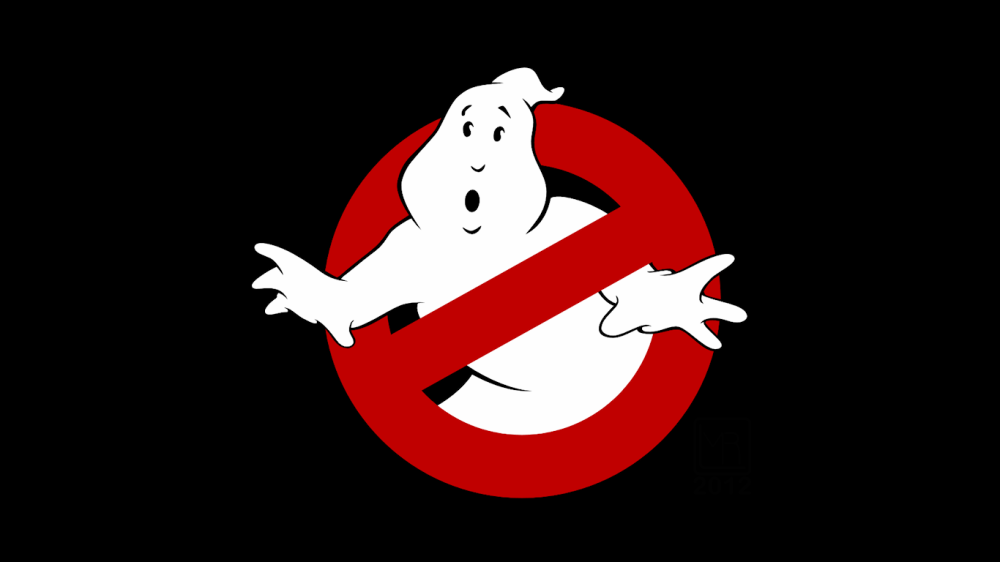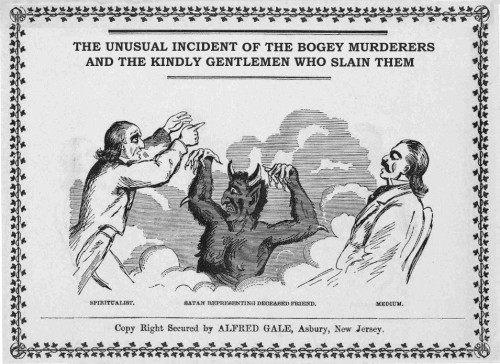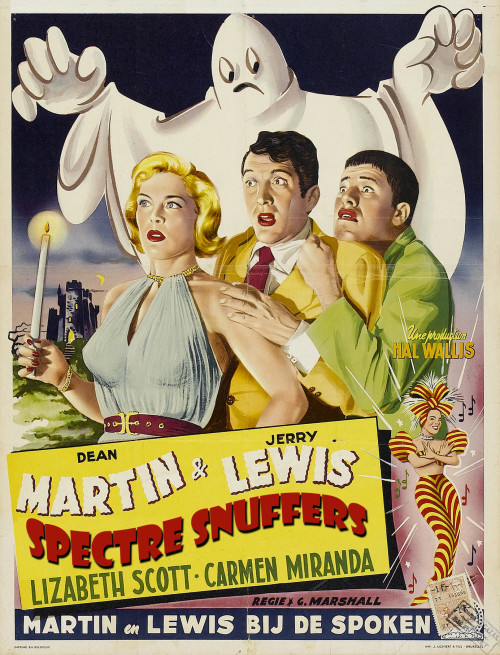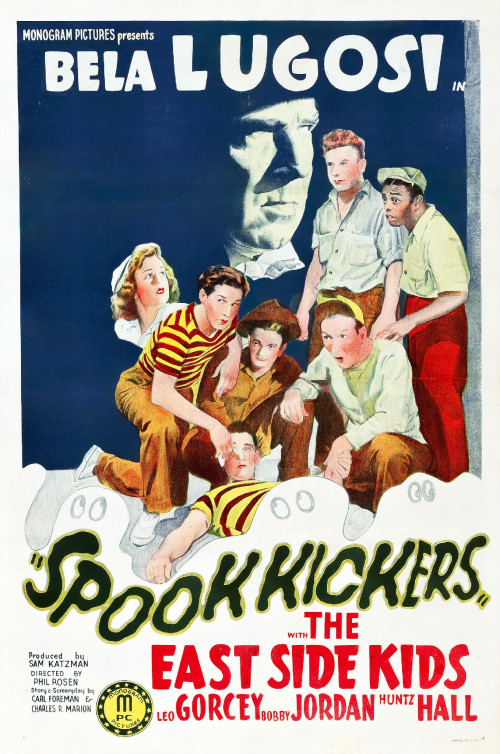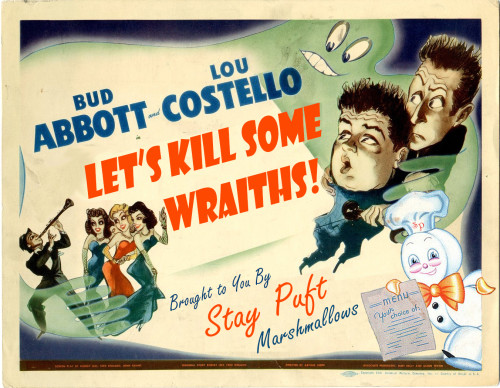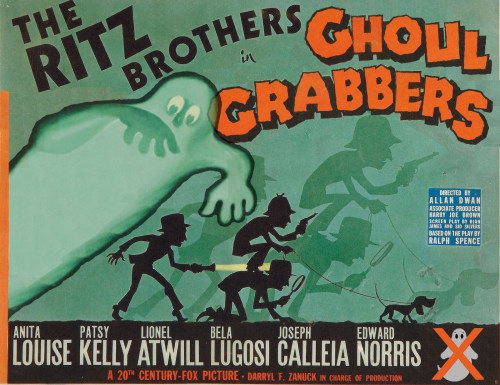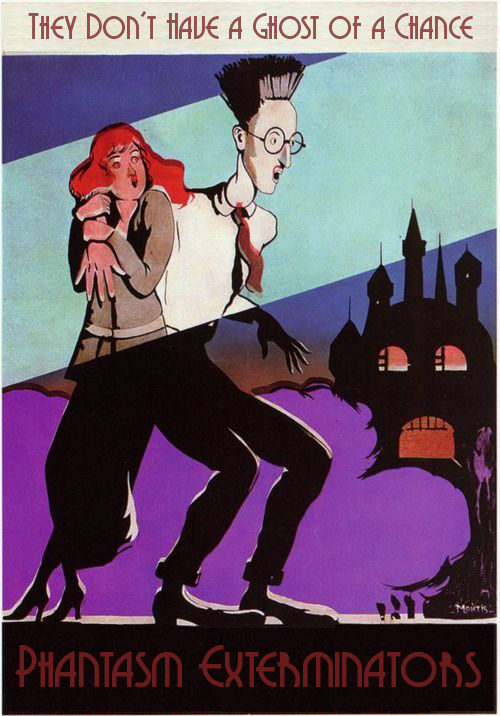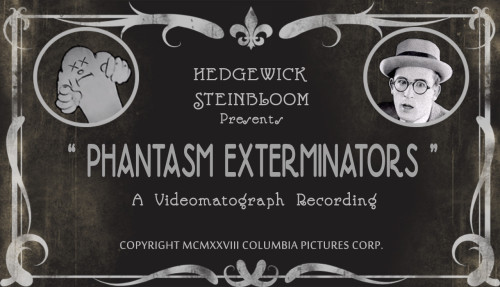With the 2016 Ghostbusters remake upon us, many filmgoers are in full nostalgia mode, looking back with fond memories to the original 1984 classic and its sequel.
But true Ghostbusters fans know the roots go back a bit further. Let’s examine some of the groundbreaking horror-comedies from yesteryear that set the foundation for the genre and shocked your grandparents and great-grandparents, while still keeping them in stitches.
The Unusual Incident of the Bogey Murderers and the Kindly Gentlemen Who Slain Them – 1847
Released during a renewed interest in the afterlife following such grisly incidents as the Mexican-American War and the Donner Party tragedy, this play nevertheless shocked the audiences of its day due to the “red devil villains” of its plot and the gallons upon gallons of goat’s blood used in every performance.
In fact, audiences were so affected during its inaugural performance, much of the city of Chicago was plagued with rioting and mass hysteria, both brought about by citizens claiming to see various “bogeys” before their very eyes and attempting to slay them with clubs and glass bottles. Throughout its four-year run, the play is believed to have been responsible for just under 7,000 deaths.
Spectre Snuffers – 1951
When Dean Martin, apropos of nothing, turned to Jerry Lewis one day in 1950 and stated, “I’m afraid of ghosts, Jerry. Real afraid,” Lewis thought it was a gag, even though his partner was deadly serious.
Out of this incident came Lewis’ idea for a surefire hit comedy, in which Martin would be placed in as many situations as possible to utterly terrify him, while Lewis would point and laugh hysterically, occasionally mugging for the camera.
Adjusted for inflation, the film made 800 million dollars.
Spook Kickers – 1938
Purported to be a sidesplitting comedy for the whole family in the vein of the Marx Brothers and Our Gang, the film nevertheless remains inexplicably unavailable in the American collector’s market as of this posting. Numerous letter-writing and email campaigns have been mounted over the years to persuade rights-holder Paramount Pictures to re-release the piece, but so far the only response fans have received was a terse “Please stop” in regards to repeated Facebook wall posts in 2012.
Unusual for a cult film, the piece’s appeal tends to fall mostly along regional lines, with southerners surprisingly making up its core audience.
Let’s Kill Some Wraiths! – 1943
Produced while bigamist Lou Costello was going through three separate divorces, Let’s Kill Some Wraiths! (renamed Abbott and Costello Meet the Slime Monster in some markets) was a bit of a departure for Abbott and Costello, barely qualifiable as a comedy. With his personal life in turmoil, Costello pressured the screenwriter to push the film in darker and darker directions, eventually resulting in a picture much more like The Seventh Seal than “Who’s on First?”
This didn’t sit well with financier Stay Puft Marshmallows, or its CEO and mascot Jonathan “Mr. Puft” Puffy. After numerous edits, the inclusion of 200,000 marshmallows during reshoots, and no less than 19 subliminal “BUY STAY PUFT” frames inserted into the ultimate product, the film was finally deemed fit for public consumption and became a box office success. Additionally, marshmallow sales skyrocketed, ushering in a new era of prosperity for Stay Puft Marshmallows, and leading its founder to finally pursue his lifelong dream of running for public office. He became Senator Puffy in 1946 and served an impressive five terms.
Ghoul Grabbers – 1946
Produced in large part to cover gambling debts star Rance Heyward had accrued with the Chinese mafia, Ghoul Grabbers went on to become the smash hit of 1946. Though popular across many demographics, a large part of its audience was made up of returning servicemen, who reveled at the chance to see death portrayed in a fashion other than the abject horror of reality.
Despite its financial and critical successes, however, Heyward was unable to see any rewards for his efforts. He fled Hollywood shortly before filming wrapped after receiving a tip from a Chinese laundress that Boss Jiang was closing in. He was later found murdered execution-style in a Tulsa Woolworth’s. To avoid negative publicity, 20th Century Fox removed his name from all promotional materials.
Phantasm Exterminators – 1928
The brainchild of noted producer Hedgewick Steinbloom and director Conrad Shift, and starring Billy “Bug-eyed” Bunkers and Henrietta Twips – the most profitable duo of their day – Phantasm Exterminators went on to become the highest grossing film comedy of the 1920s.
Part of the reason for the success was due to its pre-Hays Code release, since the film was filled with risqué humor and scenes of a questionable nature, which both shocked and enticed theatergoers. Modern audiences are still often taken aback by Bunker’s self-penned ditty “A Hand, a Clam and a Mammary Gland,” along with the graphic seven-minute dry humping scene, the first of its kind in film history.

